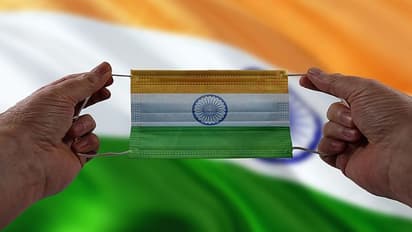'Numbers are sometimes controversial': WHO defends claim of 4.7 million Covid deaths in India

Synopsis
"We have had a series of consultations with colleagues from India and have responded to the questions with regard to the tier classification, data availability and the methodology that has been applied," WHO said.
India had on Thursday strongly objected to the use of mathematical models by the World Health Organisation to report that nearly 4.7 million people died in the country due to Covid-19.
The government claimed that despite the availability of authentic data published by the Registrar General of India, the WHO still chose to project excess mortality numbers for India.
India officially reported 481,486 Covid-19 deaths between January 1 2020 and December 31, 2021. However, WHO estimates are 10 times more than the official estimates and imply that the country accounts for about a third of the Covid-19 deaths across the world.
According to the WHO, in the absence of high-quality data from countries, it had to rely on a modelling approach to generate these numbers. This means that the WHO took the input data that is available from whatever source and use a standard statistical model.
Dr Samira Asma, Assistant Director-General for Data, Analytics and Delivery at WHO, said: "We have had a series of consultations with colleagues from India and have responded to the questions with regard to the tier classification, data availability and the methodology that has been applied. We continue to engage with them. India also released the 2020 estimates. In the next update, we will show the data that India has provided."
"Numbers are sometimes controversial. We have to recognise that the estimates are an approximation of reality. There is also variability in the data availability. And it has become very obvious during the course of the pandemic, that there has been data that has been missing or unknown, there have been delays in reporting and basically, all of us were caught unprepared. And when we report data for all countries, it is in every country's interest to ensure that data is represented accurately. And that is why WHO engages with all our member states and holds very transparent consultations when we produce estimates," she said.
"We make sure that the methodology is vigorous. We request all countries to report the recent data that is available. And many countries that have good data have reported, many countries face challenges because there is a lack of capability that calls upon every country to invest in solid and health information systems," she added.
William Msemburi, technical officer for WHO's department of data and analytics, said: "In India, the reported number of Covid-19 deaths in the year 2020 is 149,000 and the estimate for excess is 830,000. So that's our point estimate. When it comes to point estimates, you always need to consider the uncertainty interval, which is around 385,000 to 1.3 million. So there is a wide uncertainty interval around that estimate for 2020. And then the accumulation towards the end of 2021, the reported Covid-19 deaths is 481,000 and the estimated excess is 4.74 million. The uncertainty around that is 3.3 million to 6.5 million. That's is the estimated numbers for India."
WHO defines excess mortality as the difference between the number of deaths that have occurred and the number that would be expected in the absence of the pandemic based on data from earlier years.
Excess mortality includes deaths associated with COVID-19 directly (due to the disease) or indirectly (due to the pandemic’s impact on health systems and society). The estimated number of excess deaths can be influenced also by deaths averted during the pandemic due to lower risks of certain events, like motor-vehicle accidents or occupational injuries.
What was the WHO methodology?
According to the WHO, in the absence of high-quality data from countries, it had to rely on a modelling approach to generate these numbers. This means that the WHO took the input data that is available from whatever source and use a standard statistical model.
Dr Somnath Chatterji, senior advisor in WHO's Department of Data and Analytics, said, "We had data from about half the countries. We took that data and consulted with the expert group. That allowed us, within a standard modelling framework using the available contextually data from countries, to generate estimates."
"We have made available all the input data, the method that we have used to generate these estimates as well as the code that has been used. This means that if a country would like to look at this estimate they can understand the full process. Then they can take their own input data and re-run these models to generate their estimates. The approach that we have taken is to use a modelling strategy which is parsimonious and can be easily understood."
Stay updated with the Breaking News Today and Latest News from across India and around the world. Get real-time updates, in-depth analysis, and comprehensive coverage of India News, World News, Indian Defence News, Kerala News, and Karnataka News. From politics to current affairs, follow every major story as it unfolds. Get real-time updates from IMD on major cities weather forecasts, including Rain alerts, Cyclone warnings, and temperature trends. Download the Asianet News Official App from the Android Play Store and iPhone App Store for accurate and timely news updates anytime, anywhere.